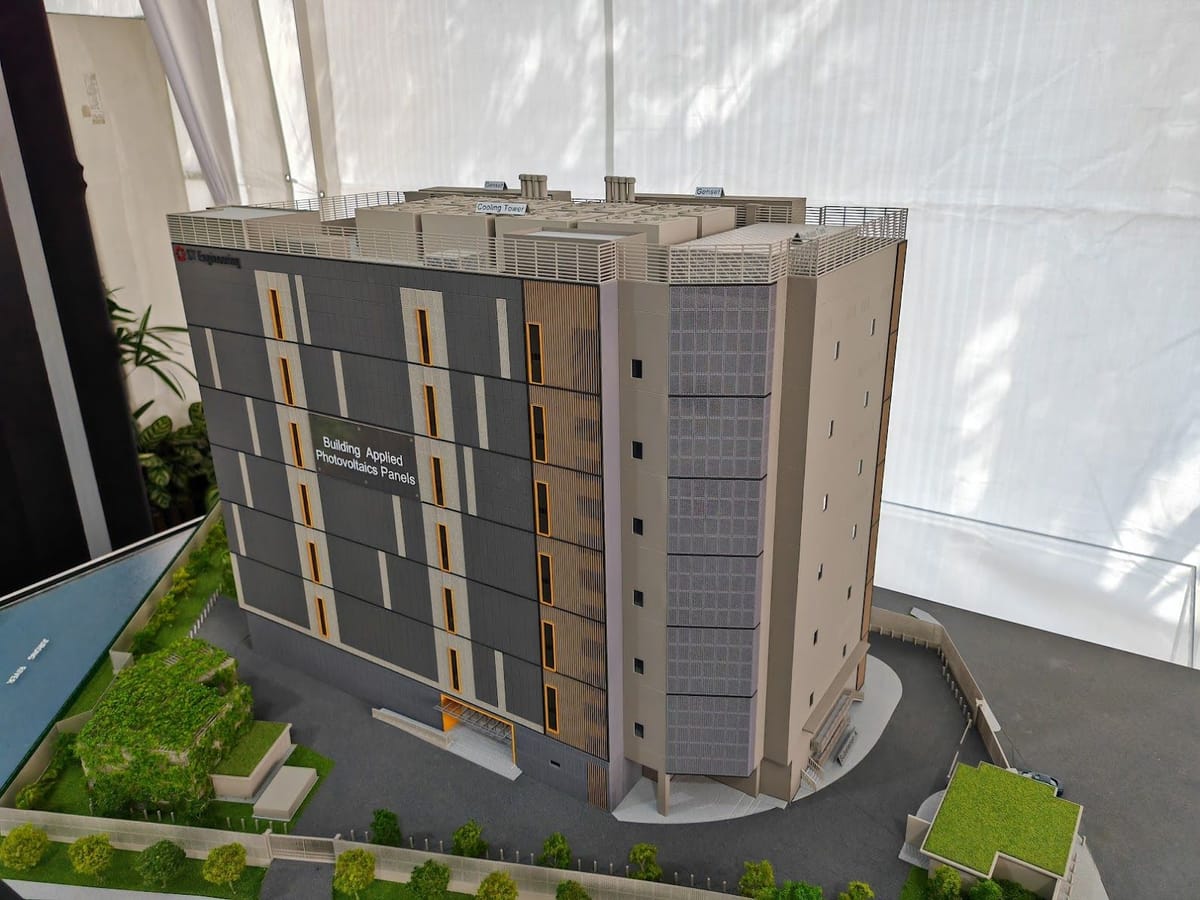The twin innovations in ST Engineering's latest data centre
Two never before seen features in a Singapore data centre.

ST Engineering's latest data centre has two features that are firsts in Singapore.
- I wrote about the groundbreaking of ST Engineering Data Centre @ Boon Lay last month.
- Approved before IMDA's 300MW announcement, it is a modern data centre with a strong focus on sustainability.
The upcoming data centre incorporates two innovations that are a first here. Nobody else has talked about it, so I am.
Airbitat cooling system
The Airbitat data centre cooling system is an evaporative cooling tech developed by ST Engineering, initially as a solution to cool city spaces.
Redesigned for data centres, this marks the first time it's installed in a new facility.
How it works:
- Pre-cool hot return air from data halls.
- Reduce chiller systems load by over 40%.
- Achieves PUE of 1.3 or better (live system data).
It has two key components:
- Airbitat dual coil CRAH* unit.
- Airbitat cooling unit.
The Airbitat dual coil CRAH accepts both chilled water (~12°C) from the data centre chiller and cold water (~26°C) from the Airbitat cooling unit. The latter functions as a pre-cooler, handling > 40% of the heat load.
The Airbitat cooling unit uses a patented 3-step cold water generation process without generating waste heat - ST Engineering claims it beats conventional evaporative cooling systems.
The Airbitat data centre cooling system will help achieve 20% net energy savings in tropical data centres.
I suspect Airbitat cooling units will be installed along the west facade of the data centre - The mock-up shows it entirely covered by gensets, which seems implausible given its 7.5MW capacity.
*Computer room air handling

Vertical solar panels
Another first is the use of vertical solar panels installed on its east facade, spread over 2,400 sqm. Details weren't confirmed when I spoke with ST Engineering, but the rated capacity should be around 180kVp.
This innovation is noteworthy because vertical building-integrated photovoltaics is specifically mentioned in the Singapore Green Data Centre Roadmap, unveiled in May.
It is not clear if data centre operators will be viewed more favourably by IMDA if they design such panels into new data centres. Regardless, the lessons learned here can only benefit the industry.
That's all I have for now.
Further reading:
